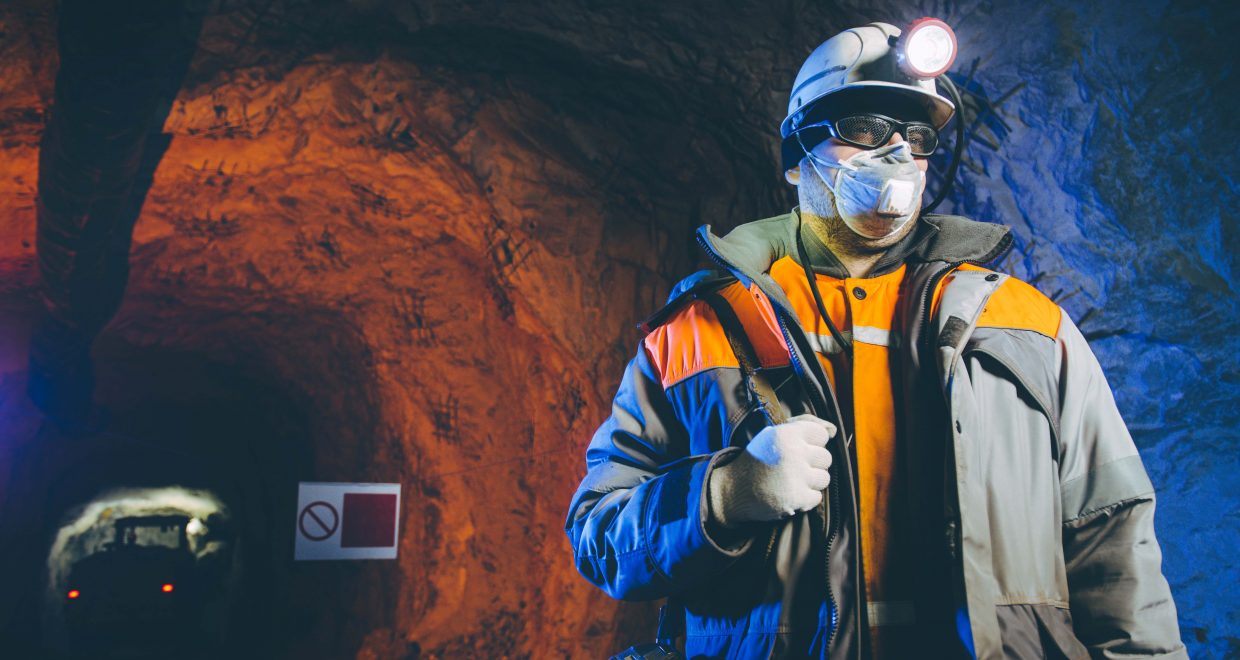Modelling silicosis: The structure of equilibria
Silicosis is lung disease caused by the inhalation of respirable dust that contains quartz or similar particles. These particles can embed themselves deeply in the lung and the reaction of the tissue is called silicosis. The illness is especially known as an occupational disease of mine workers having a ‘black lung’. First mentioned by physicians in about 1500, one could only diagnose the illness if the patient was already dead for a long time until X-rays were detected in 1895 [1,2]. Although the total number of people dying because of silicosis is declining, silicosis is still an important environmental health problem in recent times as it still resulted in 46,000 deaths globally in the year 2013 3].
To get better knowledge of the illness and thus find therapies to cure the disease, mathematical models can be helpful. Recently, an enhanced model for silicosis was proposed by Fernando P. da Costa, Michael Drmota and Michael Grinfeld in the European Journal of Applied Mathematics. The authors work is based on the model proposed in the paper “Mathematical model of phagocytosis and inflammation after the inhalation of quartz at different concentrations” by Tran, Jones and Donaldson that was already published in 1995.
In the original model the time evolution of the concentration of macrophages containing quartz particles is modelled. Macrophages are a type of white blood cells that engulf and digest foreign substances that do not belong into the cell in a process called phygocytosis. The novelty of the new model is the fact that the authors take the time evolution of quartz in the lung into account. More precisely, the resulting mathematical object is a system of coagulation-fragmentation equation that describes the time evolution of densities of particles clumping together to size x at time t. Consequently, the authors are able to analyse the long-time behaviour of the system under a continuous influx of quartz which translates in reality to the case of a human being constantly breathing in a fixed amount of quartz every day.
When analysing partial differential equations, a frequently asked question regarding the long-time behaviour of the system is the existence of equilibria. That means after some time a condition is reached where all forces are balanced and the concentration of particles does not change any longer. In particular, as the authors state by themselves they are able to “provide criteria for existence and non-existence of equilibria, solve completely the particular case of piecewise constant coefficients and analyse the asymptotic of infinite sums that arise in the study of equilibria”. In this context equilibria might be interesting as follows: If we know how much quartz a worker is breathing in, the model should help to predict the equilibrium state of quartz in the lung that might be reached in late future. If the concentration of quartz in the lung at the equilibriums is too high, i.e. will very likely result in health defects of the human being, the amount the person has breathed in for a long time was too much, or the duration the person was exposed to respirable dust was too long.
Summarising, this model is exciting as it helps to formulate thresholds which determine when the amount of daily consumed quartz is too much and would result in health defects.
References for medical background:
1] Nikolaus Konietzko u. a.: Erkrankungen der Lunge. de Gruyter, 1994, ISBN 3-11-012130-1, S. 444–455.
2] Georgius Agricola: De Re Metallica Libri XII. Übersetzung in Deutsch von Carl Schiffer, VDI-Verlag GmbH, Düsseldorf 1977, S. 183, ISBN 3-18-400383-3.
3] GBD 2013 Mortality and Causes of Death, Collaborators (17 December 2014). “Global, regional, and national age-sex specific all-cause and cause-specific mortality for 240 causes of death, 1990–2013: a systematic analysis for the Global Burden of Disease Study 2013”. Lancet. 385 (9963): 117–71. doi:10.1016/S0140-6736(14)61682-2. PMC 4340604. PMID 25530442.
References for mathematical background:
3] Da Costa, F., Drmota, M., & Grinfeld, M. (n.d.). Modelling silicosis: The structure of equilibria. European Journal of Applied Mathematics, 1-18. doi:10.1017/S09567925190003292]
4] Tran, C.-L., Jones, A. D. & Donaldson, K. (1995), Mathematical model of phagocytosis and inflammation after the inhalation of quartz at different concentrations. Scand. J. Work. Environ. Health 21, 50-54







nice